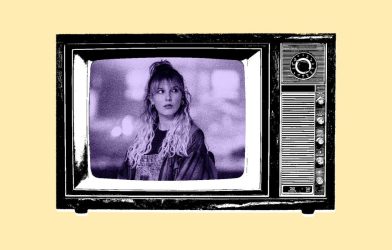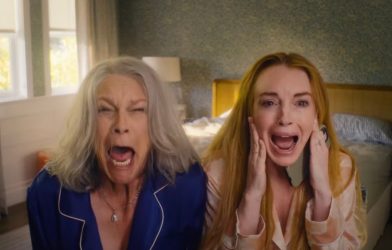With its big musical numbers and whimsical settings, Barbie is pretty similar to a lot of Indian cinema, argues Shivani Dubey
Ever since it was announced that Greta Gerwig would be directing a live action Barbie movie, the internet has been obsessively poring over the film. Now, it seems like Barbie has completely taken over the world: the film is on track to earn a billion dollars worldwide and has already become the highest-grossing film by a female director in history.
The film’s feminist message has arguably been the biggest talking point since its release, but in the times I watched Barbie, something else kept standing out to me: Barbie is a lot like a Bollywood movie. From the elaborate musical productions to the whimsical set designs to even how the cast interact with each other, so many elements of the film reminded me of an Indian film production – and I’m not the only one. Many people online have noticed the same thing: “Barbie has taught me that many of y’all need to just put on a Bollywood movie idk”, reads one tweet with over 130,000 likes.
As someone who has grown up with Bollywood and Indian movies, it is hard not to see how similar they are. The Bollywood film Om Shanti Om has often been cited as a Bollywood parallel due to its colourful visuals, fantastical sets, choreographed dance numbers with the entire cast and the fact that the story is the ultimate, Bollywood manifestation of “she’s everything, he’s just Ken”, with Shantipriya (Deepika Padukone) as the unattainable superstar and Om (Shah Rukh Khan) as the common man who pines for her.
“I think the main thing that stands out to me is Barbie’s use of musical numbers set against lavish and expressionistic sets. This is not to say that Barbie necessarily owes anything to Bollywood or any other Indian industries, but the hyper-stylised hallmarks end up speaking a similar visual language as many Bollywood films,” says filmmaker and TV writer Siddhant Adlakha. “The ‘I’m Just Ken’ song and the dance-off immediately took me back to Dil Toh Pagal Hai’s ‘the dance of envy’ sequence,” adds film critic Sucharita Tyagi.
As someone who has grown up with Hindi cinema, I always am extremely apprehensive when a Hollywood musical gets critical and general acclaim. Because more often than not, a lot of the West tends to make fun of Bollywood films, almost all of which are musicals. And as much as it is lovely seeing people praise Barbie for its musical dance numbers and the whole production of ‘I’m Just Ken’ by Ryan Gosling, I know that if this had been a Bollywood retelling of Barbie’s story, people would have been very quick to dismiss and ridicule it.
Ok I loved Barbie but y’all need to know this is Bollywood-core and some of y’all would straight up be making fun of it if you saw it in a Bollywood movie https://t.co/cJi73EHGNR
— Saumya (@SaumyaNotSonia) August 1, 2023
I have lost count of the amount of times I’ve seen people complain or express their dumbfoundedness over the “randomness” of songs in Indian films. Priyanka Chopra Jonas, who is one of the few huge Bollywood icons to have made a successful transition over to Hollywood, once even had to explain in an interview that the use of music and dance in Indian films actually has a purpose. “Not every Bollywood movie – though music is a very important part of our movies – is just break-out-into-random-synchronised-dancing,” she told Seth Meyers. Songs are often used in Indian films as a medium to drive the story forward and to condense what would otherwise be a boring half-hour filler into a fun, four-minute song.
In fact, a lot of Western audiences seem to have little to no idea about what Indian films – of which Bollywood is just one sub-sector – actually entail. Take RRR, the epic Tollywood film which became a surprise crossover success across the world. Many people mistook it for a Bollywood film, which it is not – Tollywood is the name given to Indian cinema in the Telugu language, widely spoken in the states of Andhra Pradesh and Telangana. Indian cinema isn’t just Bollywood – we have everything from inspiring sports dramas, gritty gangster films and nuanced political thrillers to the heartwarming rom-coms, insane cinematic universes and gut-wrenching tragedies.
“There are lifelong film fans I’ve known in the US who had never seen an Indian movie at all until last year, despite exploring cinema from elsewhere in Asia,” explains Adlakha. “Part of this comes down to the perceived inaccessibility of Bollywood storytelling, which tends to mix a variety of tonal approaches, but this perception is odd to begin with, since the variety often results in an emotional and narrative broadness, which generally tries to appeal to as many viewers as possible.”
So every time I see a musical or a music-adjacent film like La La Land or Barbie do well in Hollywood and get nominated for a bunch of awards, I am immediately apprehensive about the hypocrisy on display when the West looks down on Indian films for the very same reason. So many people in the West have never given Indian cinema a shot, which is strange because it is available everywhere. New releases are often screened in Western countries for the South Asian diaspora to check out, and almost every major Indian film, including Om Shanti Om and RRR, are available on various streaming platforms.
“I think step one is for the Western media to understand what ‘Bollywood’ is, or rather what it isn’t,” says Tyagi. “Indian cinema comes in all shapes and sizes, many different languages and aesthetics. Even within the Hindi film industry, the landscape is so vast. There needs to be a more concerted, focussed effort to bring our cinema to this side of the world on a regular basis, and not just an RRR or a Devdas.”
The problem has never been about accessibility. It is just that there is never much marketing or critical coverage in the West for Indian films because the diaspora is already aware of it, and maybe Indian cinema doesn’t know how to (or doesn’t feel the need to) market itself to a Western audience. The Western press also doesn’t exactly cover Indian films as extensively, probably because they don’t think there is a market for it.
RRR went a long way to dispel a lot of the notions surrounding Indian cinema and made people curious about what Indian cinema has to offer, but there is still further to go. I think films like Barbie, with all their whimsy, fantasy and exuberance, can truly help bridge that gap between the west and Indian films. Because I can guarantee that if you loved Barbie, you absolutely will love a good Bollywood film.
Join Dazed Club and be part of our world! You get exclusive access to events, parties, festivals and our editors, as well as a free subscription to Dazed for a year. Join for £5/month today.









